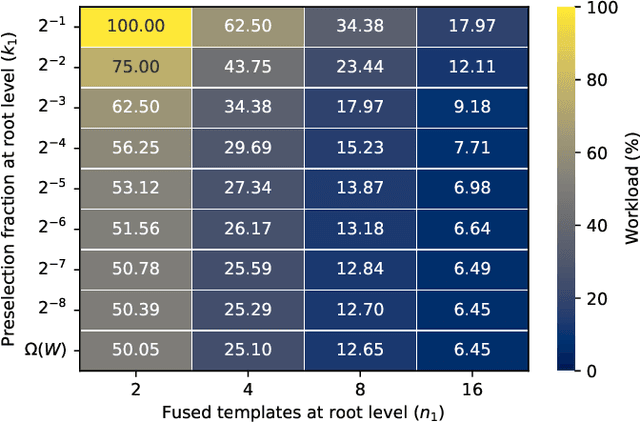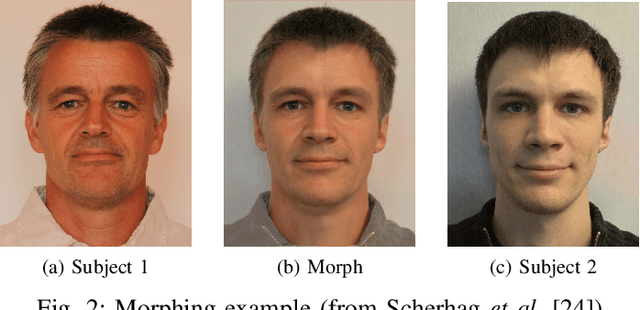Fabian Stockhardt
SynID: Passport Synthetic Dataset for Presentation Attack Detection
May 12, 2025Abstract:The demand for Presentation Attack Detection (PAD) to identify fraudulent ID documents in remote verification systems has significantly risen in recent years. This increase is driven by several factors, including the rise of remote work, online purchasing, migration, and advancements in synthetic images. Additionally, we have noticed a surge in the number of attacks aimed at the enrolment process. Training a PAD to detect fake ID documents is very challenging because of the limited number of ID documents available due to privacy concerns. This work proposes a new passport dataset generated from a hybrid method that combines synthetic data and open-access information using the ICAO requirement to obtain realistic training and testing images.
Feature Fusion Methods for Indexing and Retrieval of Biometric Data: Application to Face Recognition with Privacy Protection
Jul 27, 2021



Abstract:Computationally efficient, accurate, and privacy-preserving data storage and retrieval are among the key challenges faced by practical deployments of biometric identification systems worldwide. In this work, a method of protected indexing of biometric data is presented. By utilising feature-level fusion of intelligently paired templates, a multi-stage search structure is created. During retrieval, the list of potential candidate identities is successively pre-filtered, thereby reducing the number of template comparisons necessary for a biometric identification transaction. Protection of the biometric probe templates, as well as the stored reference templates and the created index is carried out using homomorphic encryption. The proposed method is extensively evaluated in closed-set and open-set identification scenarios on publicly available databases using two state-of-the-art open-source face recognition systems. With respect to a typical baseline algorithm utilising an exhaustive search-based retrieval algorithm, the proposed method enables a reduction of the computational workload associated with a biometric identification transaction by 90%, while simultaneously suffering no degradation of the biometric performance. Furthermore, by facilitating a seamless integration of template protection with open-source homomorphic encryption libraries, the proposed method guarantees unlinkability, irreversibility, and renewability of the protected biometric data.
Signal-level Fusion for Indexing and Retrieval of Facial Biometric Data
Mar 05, 2021



Abstract:The growing scope, scale, and number of biometric deployments around the world emphasise the need for research into technologies facilitating efficient and reliable biometric identification queries. This work presents a method of indexing biometric databases, which relies on signal-level fusion of facial images (morphing) to create a multi-stage data-structure and retrieval protocol. By successively pre-filtering the list of potential candidate identities, the proposed method makes it possible to reduce the necessary number of biometric template comparisons to complete a biometric identification transaction. The proposed method is extensively evaluated on publicly available databases using open-source and commercial off-the-shelf recognition systems. The results show that using the proposed method, the computational workload can be reduced down to around 30%, while the biometric performance of a baseline exhaustive search-based retrieval is fully maintained, both in closed-set and open-set identification scenarios.
 Add to Chrome
Add to Chrome Add to Firefox
Add to Firefox Add to Edge
Add to Edge